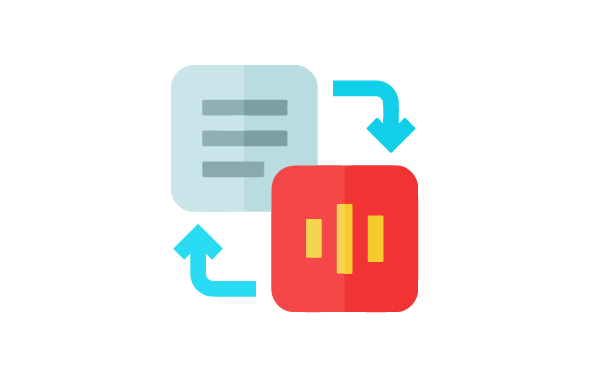Extend Your Content’s Lifespan: Smart Repurposing Strategies
To truly maximize the value of your content creation efforts, you need to think beyond the initial publication. Repurposing content is a powerful strategy that can extend the lifespan of your work, reach new audiences, and amplify your message across multiple platforms. Here’s how you can do it effectively:
Analyze Existing Content for Repurposing Potential
Before you start repurposing, it’s crucial to identify which pieces of content are worth the extra attention. Analyze your existing content library to find the gems that have the potential to be transformed into new formats.
- Performance Metrics: Start by reviewing your analytics. Which blog posts, videos, or infographics have performed well in terms of traffic, engagement, and shares? High-performing content is a strong candidate for repurposing.
- Timelessness: Look for content that remains relevant over time. Topics that aren’t tied to current events or trends can be refreshed and repurposed multiple times.
- Depth of Content: Identify long-form or comprehensive content that covers a topic in-depth. These pieces can often be broken down into smaller, more digestible formats like social media posts, infographics, or short videos.
- Audience Engagement: Pay attention to content that sparked conversations, questions, or high levels of interaction. This indicates a topic of interest that could be explored further in different formats.
Convert Content into Different Formats
Once you’ve identified content with repurposing potential, the next step is to transform it into different formats. This not only helps reach different audience segments but also keeps your content fresh and engaging.

- Blog Posts to Videos: Turn a detailed blog post into a video. This can be as simple as a talking-head video summarizing the key points, or as elaborate as a fully produced explainer video with graphics and animations. Videos cater to a visual and auditory audience and perform well on platforms like YouTube and Instagram.
- Blogs to Infographics: Infographics are a great way to distill complex information into a visual format that’s easy to digest. If you have a data-heavy blog post or one with multiple steps or tips, consider turning it into an infographic that can be shared on social media or embedded in other articles.
- Webinars to E-books or Guides: If you’ve hosted a webinar or a live stream, consider repurposing the content into an e-book or a comprehensive guide. This format allows for deeper exploration of the topic and can serve as a valuable lead magnet for your business.
- Podcasts to Blog Posts: If you have a podcast, consider transcribing episodes and turning them into blog posts. You can either publish the full transcription or create a summary article highlighting the key takeaways. This not only helps with SEO but also provides an alternative format for those who prefer reading over listening.
- Social Media Posts to Full Articles: Sometimes, a high-performing social media post can be expanded into a full blog article or video. If a particular tweet or LinkedIn post garnered significant engagement, it’s a sign that the topic resonates with your audience.
Leverage Social Media Platforms to Distribute Repurposed Content
Repurposing content is only effective if it reaches the right audience. Social media platforms are invaluable for distributing your repurposed content and maximizing its impact.
- Tailor Content for Each Platform: Different platforms require different approaches. What works on Instagram might not work on LinkedIn. Tailor your repurposed content to fit the style, tone, and format best suited for each platform.
- Cross-Promote: Use each platform to promote content on the others. For example, share snippets of a new blog post on Twitter or Instagram with a link to the full article. Use Instagram Stories to tease a video that’s available in full on YouTube.
- Schedule and Repost: Don’t be afraid to repost or reshare content, especially if it’s timeless. Use tools like Buffer or Hootsuite to schedule posts in advance, ensuring your content remains visible over time.
- Engage with Your Audience: Repurposed content is an opportunity to reignite conversations. Encourage your audience to comment, share, and engage with your posts, and be responsive to their interactions.
Track Performance of Repurposed Content
Finally, it’s essential to track the performance of your repurposed content to understand what’s working and where there’s room for improvement.
- Set Clear Goals: Before repurposing content, set specific goals for what you want to achieve, whether it’s increased traffic, more social shares, or higher engagement rates.
- Monitor Analytics: Use tools like Google Analytics, social media insights, or specialized software to track the performance of your repurposed content. Compare it to the original content’s metrics to see if the repurposing effort paid off.
- A/B Testing: Experiment with different formats and distribution strategies. For instance, test how a blog post performs as a video versus an infographic. A/B testing allows you to fine-tune your approach and discover what resonates most with your audience.
- Iterate and Improve: Use the data you collect to refine your content strategy. If a particular format or platform is delivering results, focus more of your efforts there. Conversely, if something isn’t working, don’t be afraid to pivot.
At HTC, our content marketing strategies help you elevate your online presence, improve search engine rankings, and establish your business as an industry authority.
Download our 17-Piece Digital Marketing Toolkit for more information on our content marketing services.


